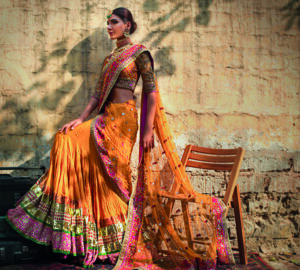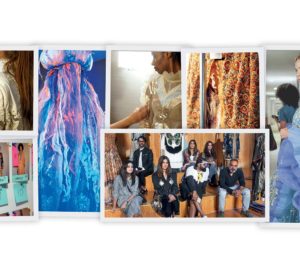There was a time when one had to search high and low for designer-wear in Pakistan. A smattering of ateliers spread out far and wide, catering only to a small exclusive niche. Business was slow, bona fide fashion had only just taken its first fledgling steps while the common milieu generally turned to erstwhile tailors for their sartorial needs. The high street was yet to spiral into the profit-wielding, all-pervasive behemoth that it is today.
Back in the ‘60’s and ‘70’s, Sughra Kazmi exported apparel and some of it would be bought by aficionados in Pakistan. Mrs. Kazmi, in fact, stumbled into fashion designing purely by accident. She was involved in exporting rag dolls by dressing them in bridal finery replete with minute embellishments and the dolls’ impeccable dressing got noticed. Suddenly, she began getting orders for life-size versions of her designs leading to the birth of a business that continues to reign over Pakistan’s bridal couture.
Maheen Khan, meanwhile, operated from within her home in Lahore and was known as ‘The Seamstress’. Sehyr Saigol’s label Libas took birth in Lahore in the ’80’s and was stocked in Lahore at The Art Centre. Around the same time, Teejays stepped into the periphery, revolutionizing retail by setting up multiple branches across the country and popularizing designs through rampant advertising and by creating wardrobes for TV dramas like “Kiran Kahani” and “Tanhaiyaan.” Also in the early ’80’s, Generation got retail rolling in Lahore, establishing a footing that would enable it to become a powerhouse in the future.
These were, however, humble beginnings and the contenders in the market were very few. In contrast, fashion today is a veritable force, with potential viability and a customer-base that is perpetually expanding.
Fashion, Present Day
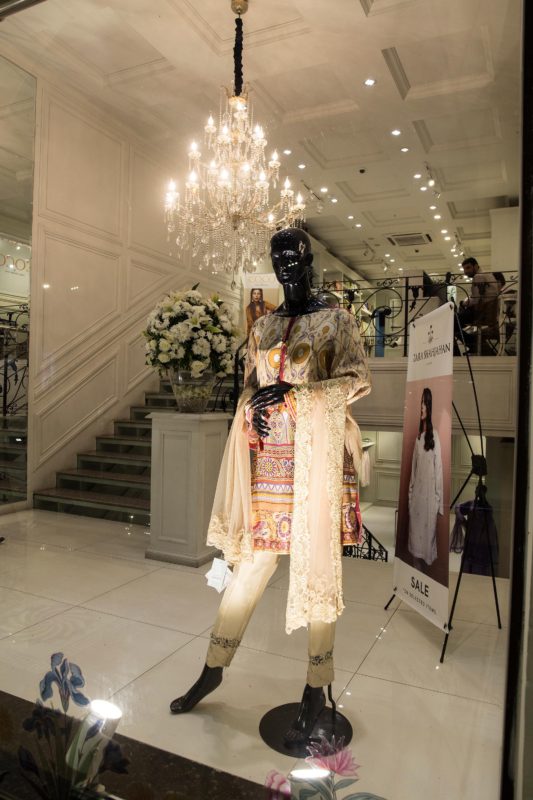
To a large extent, lawn can be credited for creating a bridge between high-end luxury wear and apparel for the masses. Boasting prestigious designer names, strong aesthetics and the promise of great quality, it was a fabric that instigated mass hysteria more than a decade ago. Traffic jams ensued and a great deal of elbowing, shoving and man-handling would be witnessed at lawn exhibitions, as crowds gathered to buy the latest limited edition collection by coveted designers like Sana Safinaz. The unstitched suits – veritable jigsaw puzzles with swathes of cloth, embroidered necklines and borders galore – would then be handed over to tailors and worn at places where one sees and is seen.
And on any given day, at any ‘it’ restaurant across the country, there were likely to be two women eating in the location, wearing the same lawn. Today, though, it is equally possible for said women to be wearing prêt, bought right-off-the-racks from a high street store.
Where at one time there was just a Teejays or a Generation, today’s retail landscape is littered with multiple options, all clamouring for a slice of prêt’s lucrative pie. These brands cater to a growing diaspora of working women and others, who can no longer be bothered with errant tailors. Ready-to-wear, in fact, has been spiralling breakneck, literally cannonballing into a retail market that’s getting more and more clustered.
Steamrolling into Prêt – Khaadi
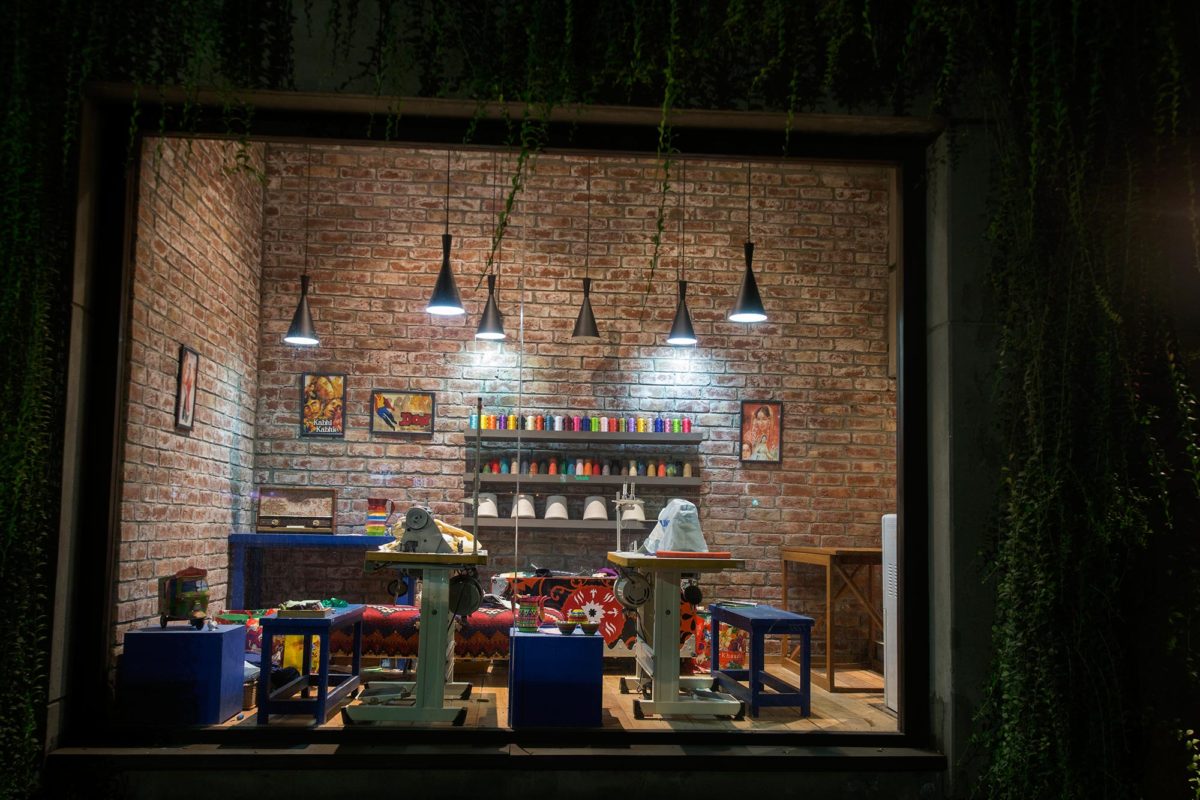
“There is no denying that the demand for unstitched fabric is still huge and is incomparable to that of prêt. It’s a hobby for women to buy unstitched cloth, design it for themselves by adding in details like buttons and laces and then make umpteen trips to the tailor to get it stitched. Prêt, meanwhile, is particularly popular in urban cities amongst working women,” observes Shamoon Sultan, CEO of Khaadi, a brand that launched in 1998 and has since mushroomed into a retail giant. Khaadi started its journey with basic androgynous tunics created from hand-loomed cotton. Today, its umbrella has widened to include unstitched lawn fabric, home accessories, handbags, jewellery as well as ready-to-wear for men, women and children.
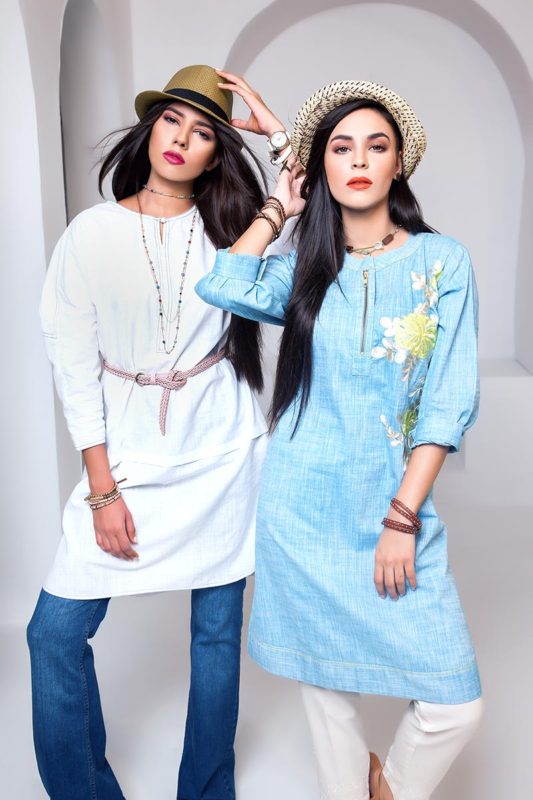
The driving force popularizing Khaadi has been the competitive pricing of its products. Other labels have followed suit, resulting in a consistent high-street price war that ensures affordability for customers. At Cross-Stitch, lawn tunic prices dive as low as Rs. 1600 and Satrangi by Bonanza has similarly won its clientele largely on the basis of its extremely economical prices, usually around Rs. 2000.
To make things more enticing, seasonal sales take place regularly, sometimes even offering flat 50% off discounts that drive shoppers into a frenzy. Case in point: the notorious Sapphire sales videos that ran rampant on social media last year.

Sartorial Aspirations
But aside from convenience and affordability, another factor that enamours customers is the aspirational value that designer-created ready-to-wear offers. It’s a paradigm that exists the world over; one may not be able to afford bona fide haute couture by an acclaimed designer but one can certainly buy into a whiff of it at a high-street store spearheaded by the same atelier. It’s the reason why Armani has an Armani Exchange line and Alexander McQueen diffuses itself to an McQ. In India, there is an affordable Balance line helmed by Rohit Bal and Manish Malhotra has a diffusion store.
Following the same pattern, within Pakistan umpteen designers have now traipsed onto the high-street; among them, Faraz Manan playing Creative Director for Crescent, Khadijah Shah designing for Sapphire, Maria B. with her eponymous label, Sana Safinaz with their high-street stores and Zara Shahjahan with her Coco line.
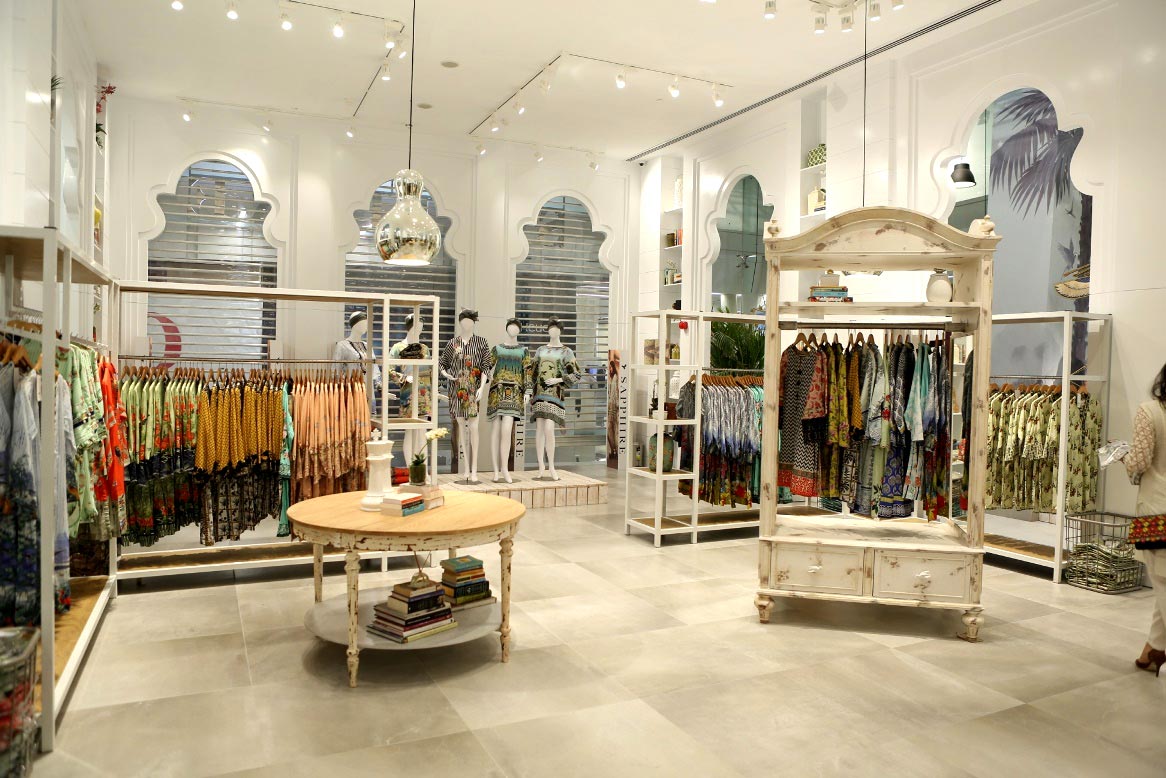
“I am actively involved in the designing process at Crescent just as I am with all my work,” agrees Faraz Manan. “Right now, the price ranges of my designs vary from crores, in the case of my jewellery line, down to under Rs. 5000 in the case of the prêt available at Crescent. Many people can’t afford the former but they buy a sliver of the same signature from the high-street.”
Khadijah Shah, the Creative Director at Sapphire, explains how the phenomenal demand for lawn was an indicator that the market was ripe for a prêt invasion. “Lawn’s popularity made it evident that women wanted to buy clothes with a designer aesthetic, given that it was at a reasonable price,” she points out. “At the time, Khaadi dominated ready-to-wear while other smaller stores only took out sporadic collections. It just made sense for Sapphire to launch into the high street. As a textile mill, it was already weaving fabric in-house, printing the fabric in-house and with a business based on exports, stringent quality control was observed. These factors particularly augmented Sapphire’s success when it launched about two years ago. As Creative Director I also made sure that the brand had a distinctive designer ethos – something that I think our customers really appreciate.”
Sahar Ghanchi, Product Head at Ideas Prêt by Gul Ahmed further adds, “As a high street brand, we try to interpret local and international trends at affordable price points. It could be a subtle change to the way the sleeve is cut or a capsule collection of custom-made prints. Some of the more modern designs are usually just limited edition collections restricted to our flagship stores but our modern changes to the kurta are rolled out to our over 75 stores dotted countrywide.”
One thing that remains common across the board, though, is that fashion retail brands continue to pander to the market for unstitched fabric while simultaneously wooing the prêt aficionado. “Sapphire’s unstitched fabric generally has a pleasing aesthetic and is very comfortable which is why it has a very varied clientele,” says Shah. “However, old women appreciate it more since they aren’t comfortable in the set sizing of ready-to-wear. The younger college girls or professionals generally prefer the ready-to-wear. And because there is new stock in the store every month, they can literally buy affordable wardrobe options every few weeks.”
Prêt, All the Way: Generation
An exception to this rule is Generation, a brand that launched in 1983 and has ever since only retailed stitched apparel. “We seriously identify ourselves as a fashion company and thrive on cut and texture,” says Generation’s Creative Director Khadija Rahman. “We love what we do and going into lawn would just undermine our ethos. There are lots of textile companies that can delve into lawn while we continue our focus on innovative fashion that hums a South Asian tune.”
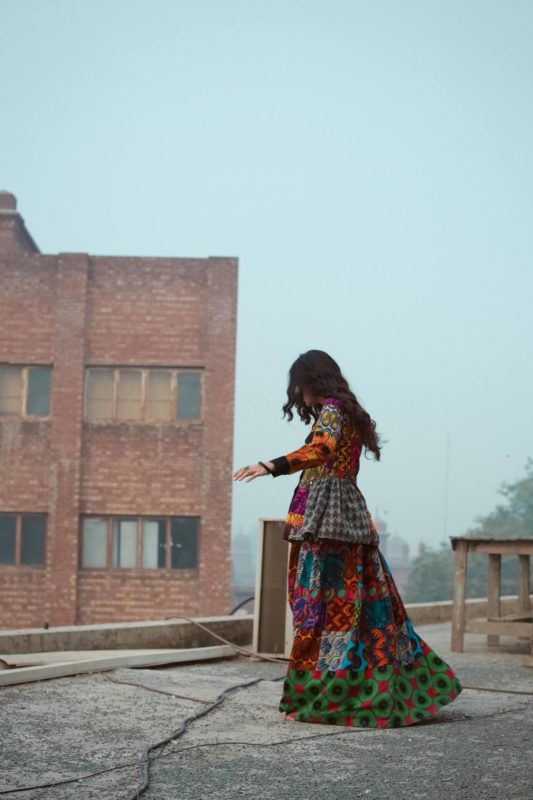
Even though Generation has always had a regular, loyal clientele, there was a time when the brand’s popularity fluctuated, affected by the large number of apparel labels popping into the market. This may have been the reason why Generation went through a reinvention of sorts, accentuating its image by taking part in local fashion weeks, putting out unique conceptual fashion shoots and veering its aesthetic into funkier territory.
“Our company has evolved to become more inclusive,” says Rahman. “It doesn’t have a controlled atmosphere and designers’ ideas are allowed to thrive. We have a number of lines that cater to unique customer types, running the gamut from classic, timeless cuts to funky fusion-wear, an indigenously hand-worked line and formals for wed dings and dinners.”

Most other brands try to provide similar variety. Menswear is usually an ignored avenue, although the recently launched Sapphire Man may up the ante. In the realm of womenswear, options vary from unstitched lawn collections to a range of prêt: basic work-wear, modern formals and a smattering of embellished, relatively affordable designs that can work well at weddings. A Khaadi has a Khaadi Khaas, a Sana Safinaz store has a section dedicated to silks and heavy embroideries and Sapphire’s printed silk designs with slight detailings teeter towards evening-wear. Cross Stitch and Threads and Motifz, labels that have long been associated with embroidered chiffon formal cloth, now translate similar aesthetics onto luxury ready-to-wear as well as more economical printed tunics.
It all looks promising; a booming market for prêt is indicative of greater buying power and a stronger economy.
Then again, there’s always the other side to the story.
The Ethical Angle
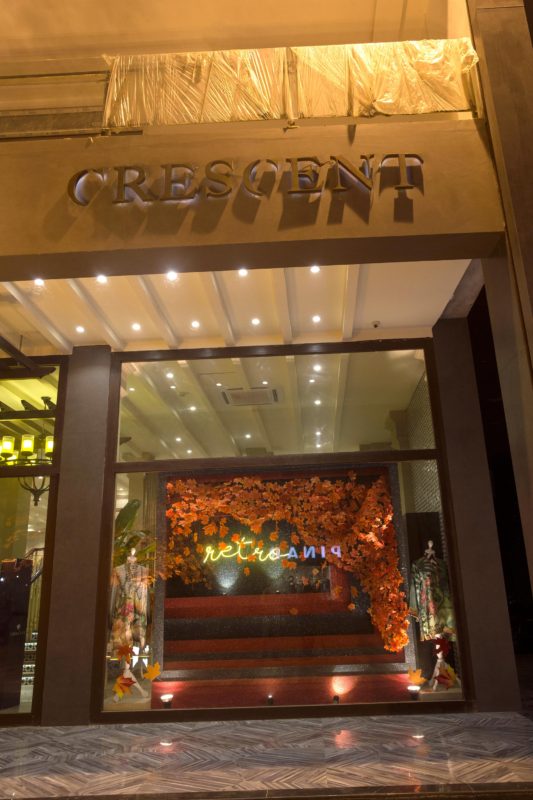
“Why are we in such a hurry to ape the West and launch ourselves onto the high-street bandwagon?” veteran designer Rizwan Beyg has been known to question. “They don’t have a traditional history of indigenous craft which is why they rely on machinery to create their ready-to-wear. It is unfathomable to me why we choose to do the same when we have such a vast reservoir of handicraft available to us. Who would want to wear a generic digitally printed kurta when they could wear a tunic painstakingly hand-embroidered in Bahawalpur? People are buying into hype surrounding a brand as opposed to true fashion.”
Rizwan’s arguments lead to a debate into throwaway fashion. According to Simon Cipriani, founder of the Ethical Fashion Initiative, fashion is the most polluting industry in the world, after oil. The high-street boom across the globe has allowed women the option to buy affordable on-trend ready-to-wear. On the flip side, the economical pricing has allowed them to wear a design merely a few times before throwing it away and replacing it with other more equally affordable options.
“The planet is burdened by 200 billion tones of textile that nobody wears,” says Beyg, “and nobody stops to ask why. They just abide by their herd mentality and keep on buying clothes that are being hyped up on social media. We never stop to ask why or consider that an affordable tunic may be the result of child labour or may use up a large amount of the world’s resources. It’s high time that we become more ethical about what we do in our lives and this includes decisions about what we want to wear.”
Internationally, a number of high-street brands have initiated the practice of offering to ‘take back’ or even, ‘buy back’ used clothing from consumers, propagating that clothes should be recycled. One saw Levi’s Pakistan follow suit recently, taking back old jeans and in exchange, offering discounts on new products.
Perhaps the local high street, now that it’s on a roll, should abide by similar measures? Beyond the hype created by social media, the buzz generated by advertising and the high of a sold-out collection, brands need to begin thinking ecologically. The high street is undoubtedly responsible for a better- dressed Pakistan; it can also work towards a better Pakistan, overall.



